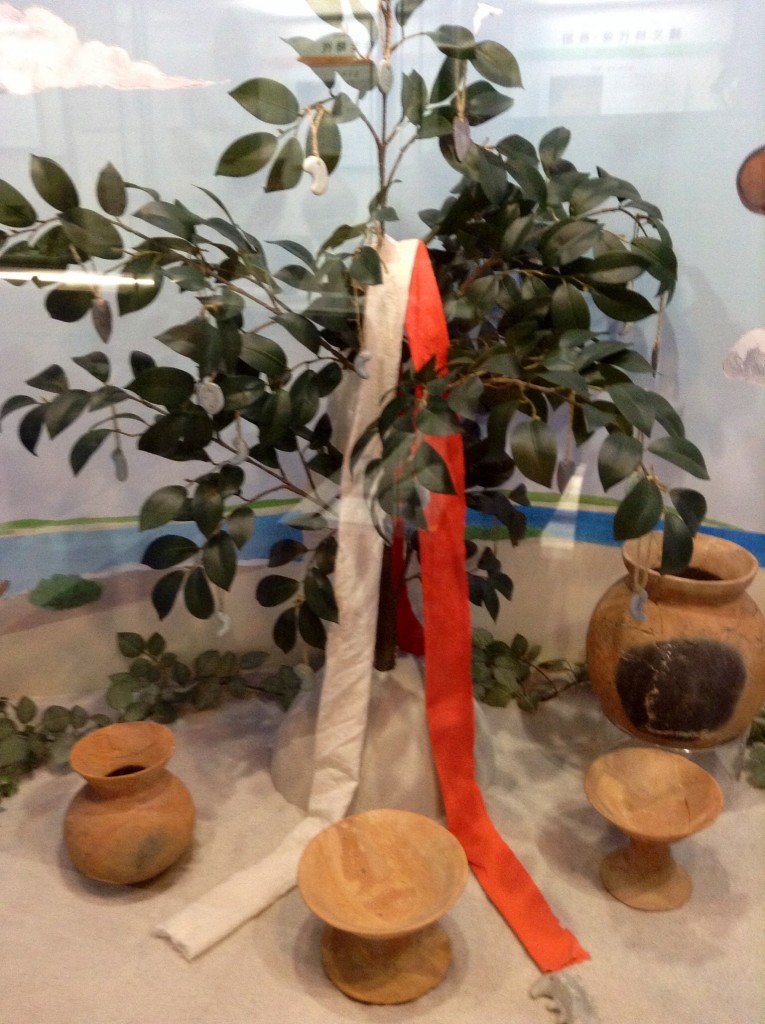
The Soul Tree, Jomon Period, excavated from the Tama Hills, Kanagawa, reconstruction of original ritual context (courtesy heritage of japan)
A fascinating post on the Japanese Mythology website, which can be found here, reaches back into Jomon times to posit the existence of a ‘soul tree’ on which magatama beads were hung. How far modern Shinto can be linked with Jomon practices is a controversial area, but this posting gives one food for thought. (The following is extracted from a longer article.)
********************************
Comparing Soul Trees and Trees of Life
by heritageofjapan
The above photo shows an excavated site belonging to the Jomon Period in Japan. The comma-shaped gemstones hung on the tree are called ‘maga-tama‘ in Japanese, ‘maga’ meaning ‘curved’ and ‘tama’ meaning jewel, which is also synonymous with ‘soul’. (Of course, we cannot be sure that is what they were called during Prehistoric Jomon times) However, maga-tama gems have been fairly common finds in Jomon Period, often seemingly in an altar setting beside a phallic item in the pit dwelling, although large numbers are excavated from Yayoi and Kofun Period tombs.
However, the specific context of the funerary and ritual setting is significant and lends a number of possible interpretations of the abstract symbolism represented by the ritual setting. Firstly, the maga-tama jewels hung on a tree in a funerary setting, are seemingly suggestive that each tama is symbolic of a soul of a departed ancestor on the Soul Tree … the idea of a Soul Tree is known in specific parts of the world.
Secondly, the excavated site is faced to a mountain with special astronomical sightings such as the appearance of the sun upon the mountain peak, suggesting yet another set of fairly complex ideas at work (in Wakhan-Afghanistan as well as in Iran, the spring New Year would not begin till the sun mounted the peak over the mountain, the people pay their respects to their ancestors the night before, lighting bonfires). The ceramic pottery suggest a scenario where food offerings were made to ancestors, (a scenario which looks a lot like the ancient versions of the Persian-Eurasia-wide New Year or spring festival).
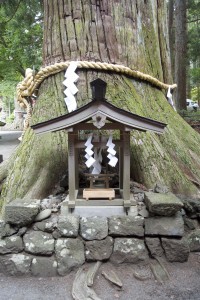 Thus, this setting we infer to be highly suggestive of symbolism of a Tree of Souls, and of ancestor veneration beliefs and practices at work. A Soul Tree is an ancestral tree to which the deceased or departed have ascended to find their rest.
Thus, this setting we infer to be highly suggestive of symbolism of a Tree of Souls, and of ancestor veneration beliefs and practices at work. A Soul Tree is an ancestral tree to which the deceased or departed have ascended to find their rest.
There also appears to be a continuity in the material culture of magatama from the Jomon through the Kofun ages. But is there also a continuity of ideas? The entry in the Encyclopedia of Shinto defines “tama” thus:
“A general term for spirit or soul in ancient times. In addition to human spirit, it also refers to spirit or spiritual force in nature. A human soul is considered a spiritual entity that comes from outside and dwells in the body, endowing the individual with energy and personality. The word tamashii (spirit, soul) presumably had an original meaning of the “function of tama.” Mitama (御魂、御霊) is an honorific term of tama. When it is written with the characters 神霊 (mitama), it refers to a spirit of a kami. Later on, the spelling of 御霊 came to be used exclusively for goryō, a spirit that brings hazards to a human society.”
The tama representing the soul or spirit of a person is a belief recognizable from the design motif found in crowns of the Kofun Period (possibly earlier) through to today’s Japanese. While the magatama beads attached to golden crowns are shared with the early Koreanic kingdoms, particularly, that of Silla, the magatama found during the earlier Jomon Period are not similarly found on the Korean peninsula, thus suggesting a different provenance and associated cultures.
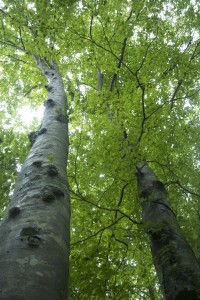 Tree worship and tree motifs are frequently said to be a universal phenomenon, however, we would like to show that within the broad notion of the Sacred or Magical Tree, there are in fact distinctive categories and different concepts, and important distinctions and different characteristics will help identify the cultural sphere the object and mytheme belongs to, and the stage of evolution and complexity of the belief, practice or myth, will lend a perspective on the historical events and times associated with the myth and mytheme.
Tree worship and tree motifs are frequently said to be a universal phenomenon, however, we would like to show that within the broad notion of the Sacred or Magical Tree, there are in fact distinctive categories and different concepts, and important distinctions and different characteristics will help identify the cultural sphere the object and mytheme belongs to, and the stage of evolution and complexity of the belief, practice or myth, will lend a perspective on the historical events and times associated with the myth and mytheme.
For example, the Jomon Soul Tree idea is not only distinctive, the concept of a Soul Tree is significant in identifying the material culture it is associated with (i.e. stone and wood) and the distinct geographical locations where the Soul Tree beliefs exist. It can be distinguished from the later material culture (bronze and gold leaf technology) which has the Tree of Life, central to the World Tree and Tripartite World cosmogony…and consequently with the cultural spheres from which metallurgy arrived.
The Jomon Soul Tree is also clearly a concept distinguishable from other ideas such as the Tree of Fortune; Fertility Tree, Dying Tree or Vegetative Deity, Tree of Knowledge, Cosmic Tree or Solar Tree, etc., each of which are distinctive enough and we may identify the associated cultural spheres of each of these. It may also prove useful and worthwhile to compare the Soul Trees found in other cultures, which may throw light on the general origins of and migrational paths taken by the Jomon people, before settling in Japan.
Other cultures with concepts of Soul Trees or cultural beliefs of a people or tribe descended from a tree include:
* Indo-China: Vietnam appears to also have a complex Soul Tree, that however, also includes Genesis-like two-tree motif which explains how mankind lost their immortality after the burial of man at the foot of wrong tree.
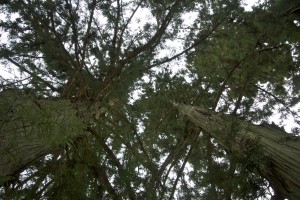
* Iranian: The first human couple, Maschia and Maschiana, issued from the ground in the form of a rhubarb plant (the Rheum ribes), which was at first single, but in process of time became divided into two. Ormuzd imparted to each a human soul, and they became parents of mankind.”
* India: Mahabharata: An enormous Indian fig-tree from whose branches hung little devotees in human form. The Malabar speak of a tree whose fruit were pigmy men and women. The Khatties of Central India are said to be descended from Khat “begotten of wood” who at the prayer of Karna sprang from the staff fashioned from a branch of a tree.
* In the European tradition of Saxony, Thuringians too speak of children growing on a tree.
“According to the Eddas, when Heaven had been made: Odin and his brothers walking by the sea shore came upon two trees. These they changed into human beings, male and female. The first brother gave them soul and life; the second endowed them with wit and will to move; the third added face, speech, sight and hearing. They clothed them also and chose their names and they sent them forth to be parents of the human race.”
According to Hesychius of the Greeks: “The human race was the first fruit of the ash, and Hesiod relates that it was from the trunks of ash-trees that Zeus created the third or fourth bronze race of men.”
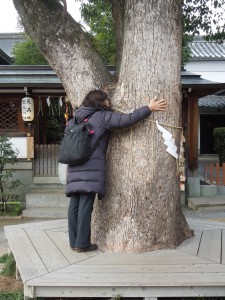 Interestingly, the Scandinavians are now thought to have received influences from their Central Asian interactions with Scythian-Sarmatians, and with the Altai tribes: (see David K. Faux “The Genetic Link of the Viking – Era Norse to Central Asia: An Assessment of the Y Chromosome DNA”, Archaeological, Historical and Linguistic Evidence, 2004 – 2007)
Interestingly, the Scandinavians are now thought to have received influences from their Central Asian interactions with Scythian-Sarmatians, and with the Altai tribes: (see David K. Faux “The Genetic Link of the Viking – Era Norse to Central Asia: An Assessment of the Y Chromosome DNA”, Archaeological, Historical and Linguistic Evidence, 2004 – 2007)
* In Damascus, South Arabia, they have a creation myth where their progenitor was a tree out of which everything descended and came – Bushmen, zebras, oxen ….
* The Semitic tradition. While the Biblical Genesis Tree of Life or more correctly, the Tree of Knowledge is best known, the Kabbalah writings speak at length of a Soul Tree of the Hebrews (see Origins of the Kabbalah by Gershom Gerhard Scholem)
God has a tree of flowering souls in Paradise. The angel who sits beneath it is the Guardian of Paradise, and the tree is surrounded by the four winds of the world. From this tree blossom forth all souls, as it is said, “I am like a cypress tree in bloom; your fruit issues forth from Me.”(Hos.14:9). And from the roots of this tree sprout the souls of all the righteous ones whose names are inscribed there. When the souls grow ripe, they descend into the Treasury of Souls, where they are stored until they are called upon to be born. From this we learn that all souls are the fruit of the Holy One, blessed be He.” This Tree of Souls produces all the souls that have ever existed, or will ever exist. And when the last soul descends, the world as we know it will come to an end.
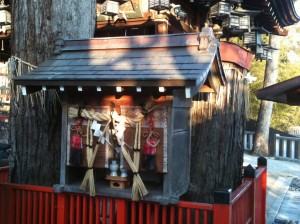
Rabbinic and kabbalistic texts speculate that the origin of souls is somewhere in heaven. This myth provides the heavenly origin of souls, and in itself fuses many traditions. First, it develops themes based on the biblical account of the Garden of Eden. It also builds on the tradition that just as there is an earthly Garden of Eden, so is there a heavenly one ….
As for the Tree of Life in Paradise, its blossoms are souls. It produces new souls, which ripen, and then fall from the tree into the Gulf, the Treasury of Souls in Paradise. There the soul is stored until the angel Gabriel reaches into the treasury and takes out the first soul that comes into his hand.
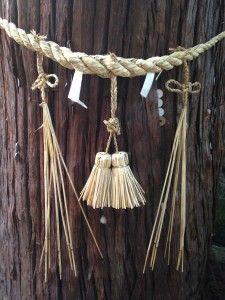
Not only is there the notion of a Tree of Souls in Judaism, and the notion that souls take shelter in trees, but there is also the belief that trees have souls.
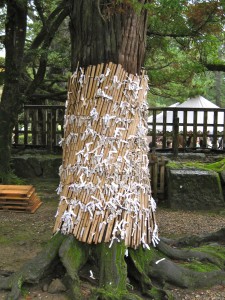
The shamanic tree: Kazakh –
“Baiterek is the world tree. Baiterek (literally – original poplar, mother poplar), the World Tree, connects all three levels: upper-heaven with nine or seven layers, middle and lower ones, having seven or nine layers of the universe. Its individual parts represent the parts of separate worlds: roots represent the underworld, crown is the middle world, branches and leaves are the upper world. Etymology of ‘Terek’ (variants: darak, darau, dara, tarak) comes apparently from *Tir – life.
Baiterek is the original life. Most often, the one story found in many fairy tales is as follows: The hero finds himself in the underworld, and after a long journey reaches a large tree where he helps the chicks of giant bird kill a snake or dragon. In gratitude, the bird delivers the hero to the earth’s surface. This is the world tree, and bird and snake are representatives of opposing worlds – the upper and lower worlds. Their perpetual opposition involves a middle world representative – a man, a hero of the tale.
Baiterek – the world tree – is the center of the universe. It is the door, the gate between the worlds, and usually sacred actions occur under such tree. Baiterek is also at the center of the horizontal model of the world. The horizontal structure of the world: on the right of the tree is the moon, on the left – the sun and the star.
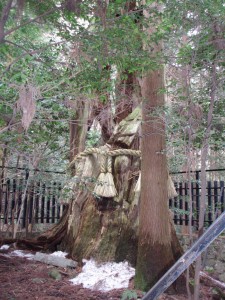 The Kazakh epic Kobylandy mentions the world tree as a tree with golden leaves (in the epic it has the golden and silver leaves). In dastan of Kashagan, it is referred as a tree of all fruits. The Turkic people had widespread belief that people take the babies under the trees, or that the ancestors’ souls live in the branches and leaves. The branches of the shaman tree, according to the ideas of Turkic-Mongol people, host the souls, preparing for a new birth.
The Kazakh epic Kobylandy mentions the world tree as a tree with golden leaves (in the epic it has the golden and silver leaves). In dastan of Kashagan, it is referred as a tree of all fruits. The Turkic people had widespread belief that people take the babies under the trees, or that the ancestors’ souls live in the branches and leaves. The branches of the shaman tree, according to the ideas of Turkic-Mongol people, host the souls, preparing for a new birth.
Kazakh shamans believe that the world tree appears as a material thing, as well as the pole put into the ground near the tomb of holy person. The symbolism is clear in this case: the pole symbolizes the world tree, by which the soul of the dead shall rise into the sky, and by which it can go down. For the same reason the Kazakhs are put on a tunduk spear after they die.
James George Frazer in his book The Golden Bough wrote of the ubiquity of the belief of soul trees among many ancient tribes all over the world, that one’s soul could be hidden in an object, totem animal, plant or tree, outside of one’s own body. He mentions the tamaniu concept of the Melanesians:
“Among the Melanesians of Mota, one of the New Hebrides islands, the conception of an external soul is carried out in the practice of daily life. In the Mota language the word tamaniu signifies “something animate or inanimate which a man has come to believe to have an existence intimately connected with his own… . It was not every one in Mota who had his tamaniu; only some men fancied that they had this relation to a lizard, a snake, or it might be a stone; sometimes the thing was sought for and found by drinking the infusion of certain leaves and heaping together the dregs; then whatever living thing was first seen in or upon the heap was the tamaniu. It was watched but not fed or worshipped; the natives believed that it came at call, and that the life of the man was bound up with the life of his tamaniu, if a living thing, or with its safety; should it die, or if not living get broken or be lost, the man would die. Hence in case of sickness they would send to see if the tamaniu was safe and well.”
The “tamaniu” is not only phonetically similar sounding but in meaning possibly finds a cognate in mi-tama, magatama, tamashi concepts of the Japanese, so that it may be possible to find a genetic connection or an interaction sphere of cultural borrowing of ideas as well.
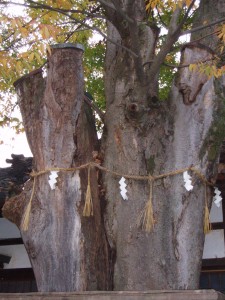
The Melanesians who are upstream (or older) in the ancestral or phylogenetic tree of the haplogroup C (Y-DNA)-bearing migrants who went northwards to Japan and to East Asia (Mongolians, Siberians, Koreans) after passing through the Indian subcontinent and Melanesian Islands. There is a Melanesian belief in the dual composition of the tama soul called konpaku (which looks a lot like the Taoist dual “maga-tama” embryo).
According to one interpretation of the Chinkon sai rite, kon is a Sinic term that refers to the soul. In ancient China kon was related to yang (of yin-yang dualism) and to the dimension of mental activity, while haku was related to yin and the somatic, physiological dimension. Thus, the soul had a two-layered structure. Accordingly, when a person died it was believed that these two components returned respectively to the heavens and the earth.
Concerning their relationship to the Japanese conception of soul (tama), the kon (tamashii) of konpaku was indicated as corresponding to it. This was according to an interpretation of chinkon (pacifying spirits) found in the regulations dealing with personnel in the article for Shintō administration of the ritsuryō legal code, which was revised in the first half of the eighth century.

Leave a Reply